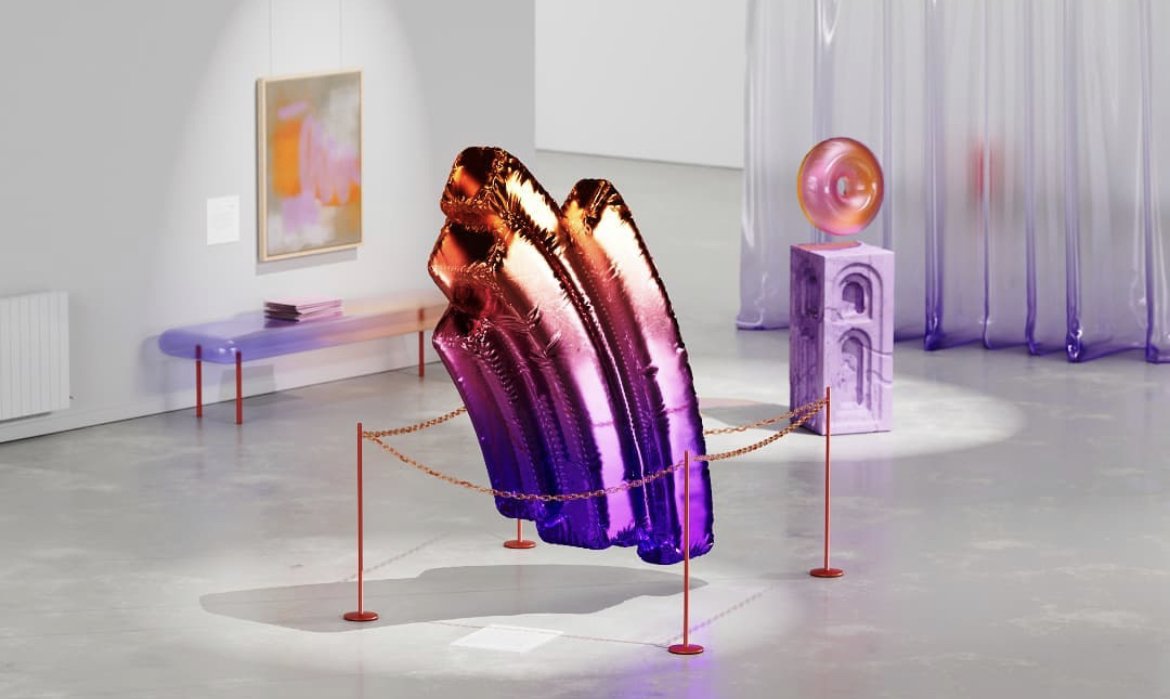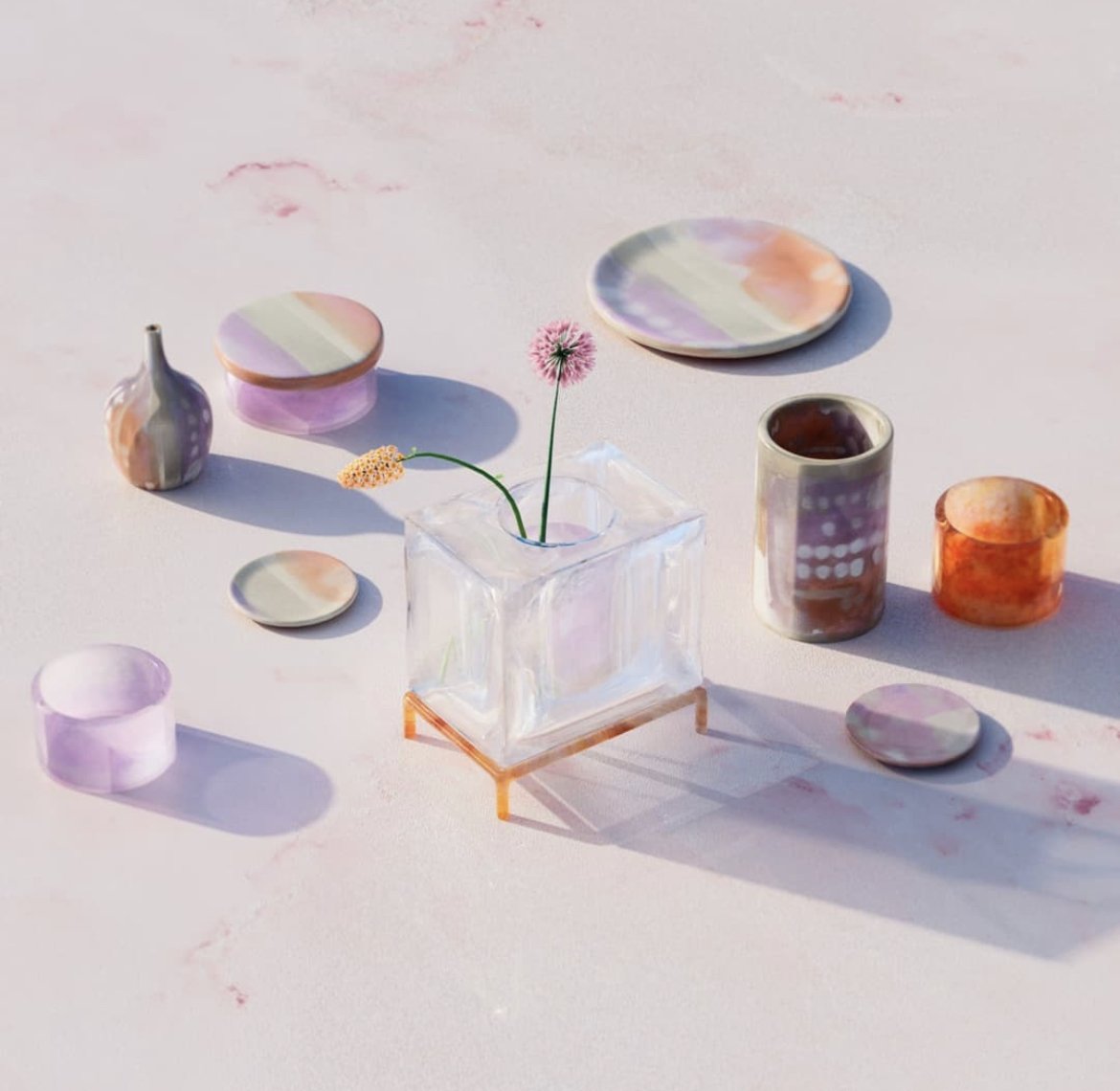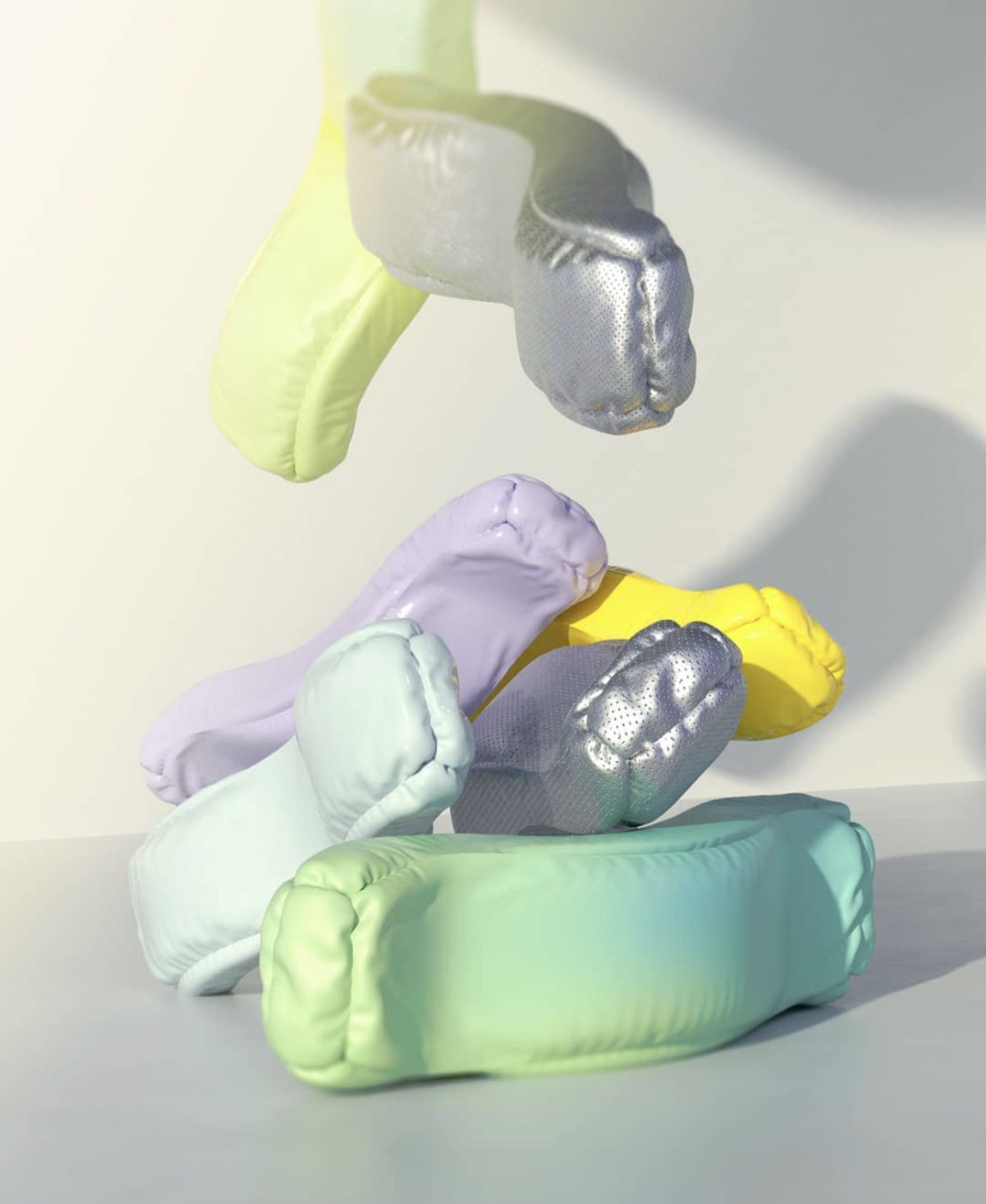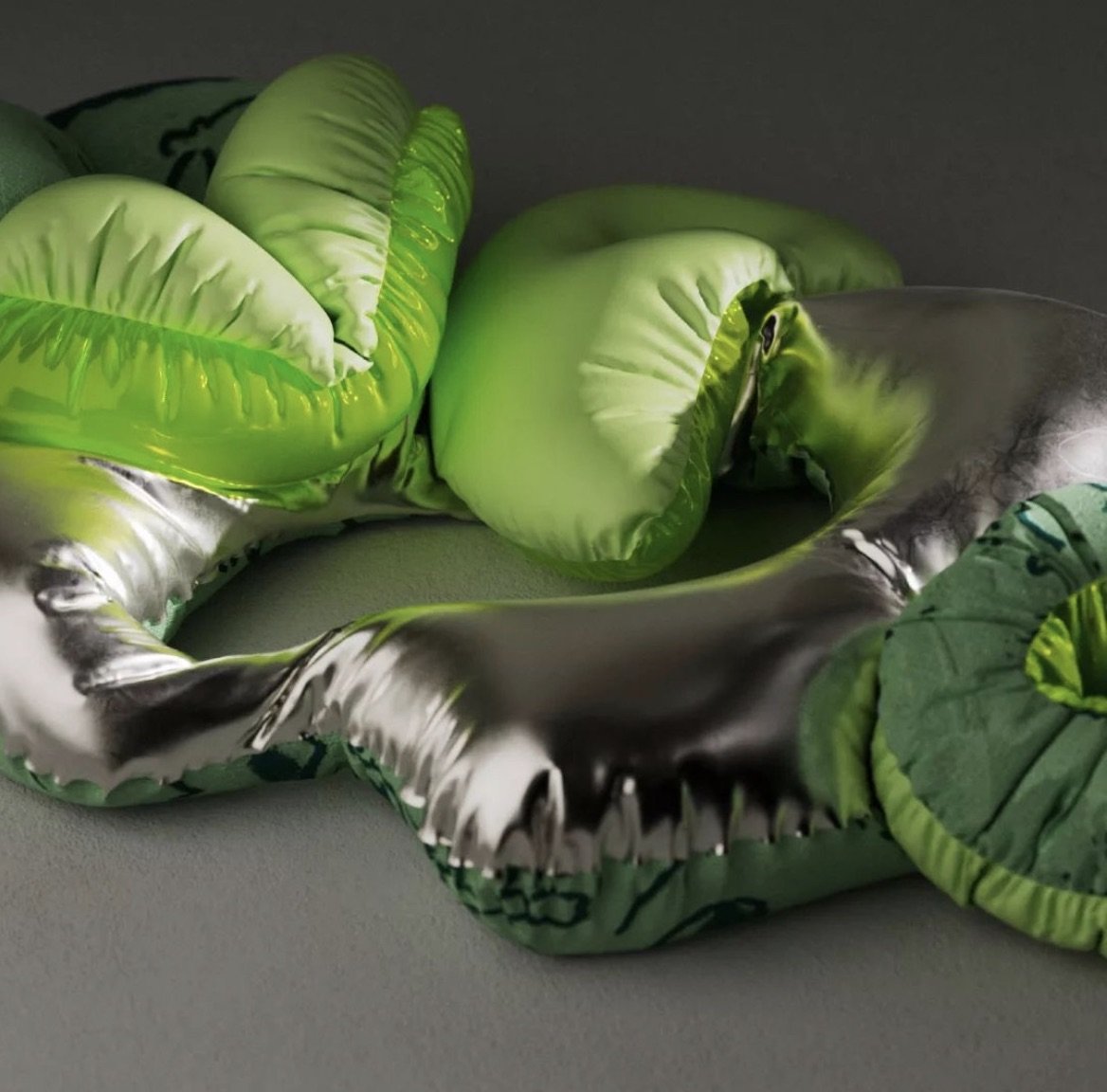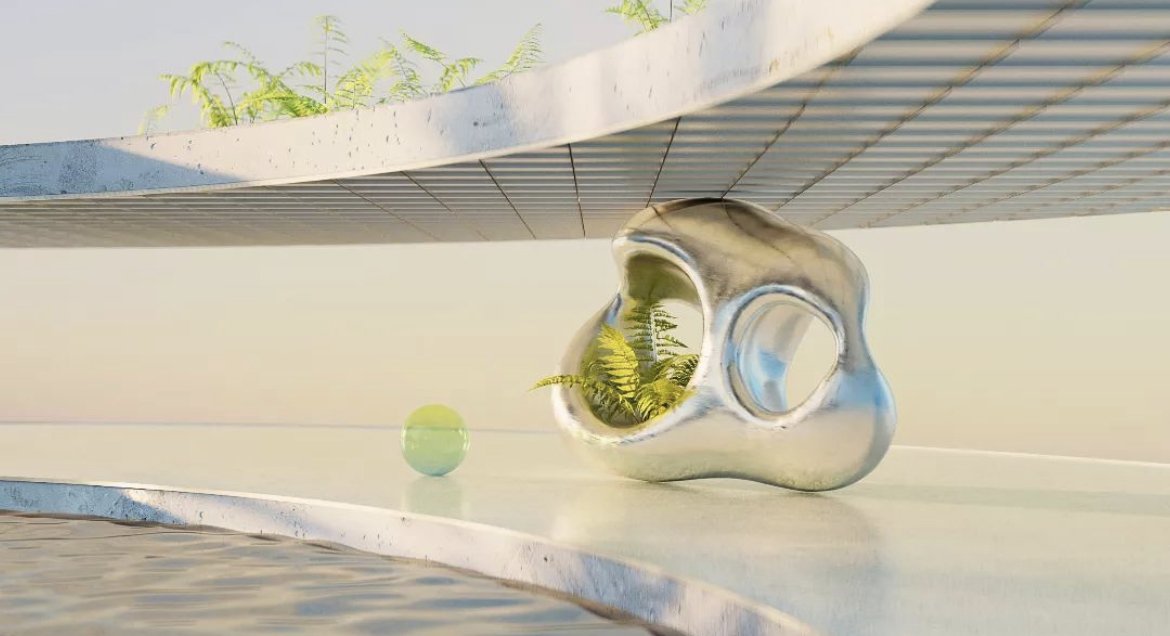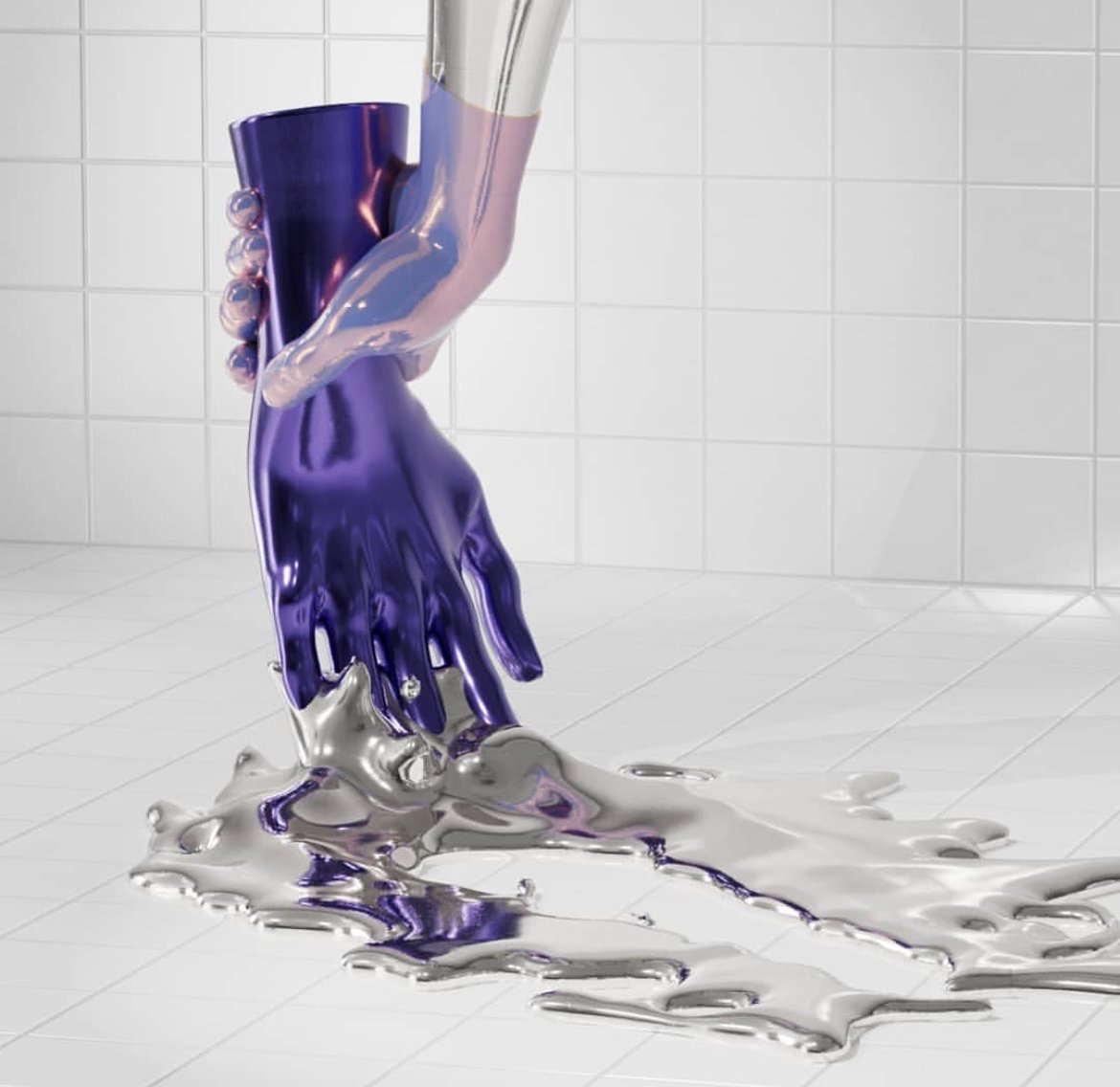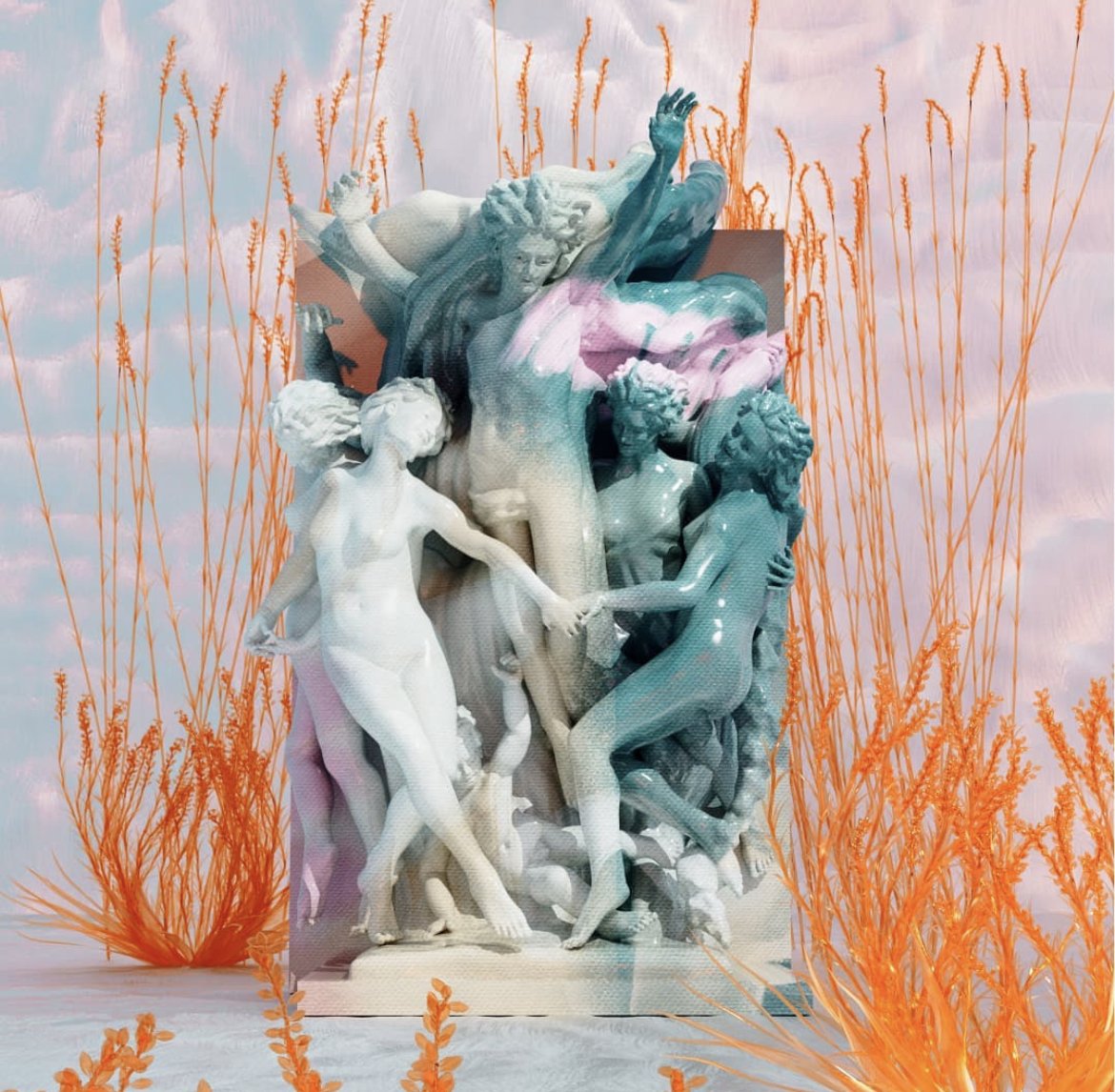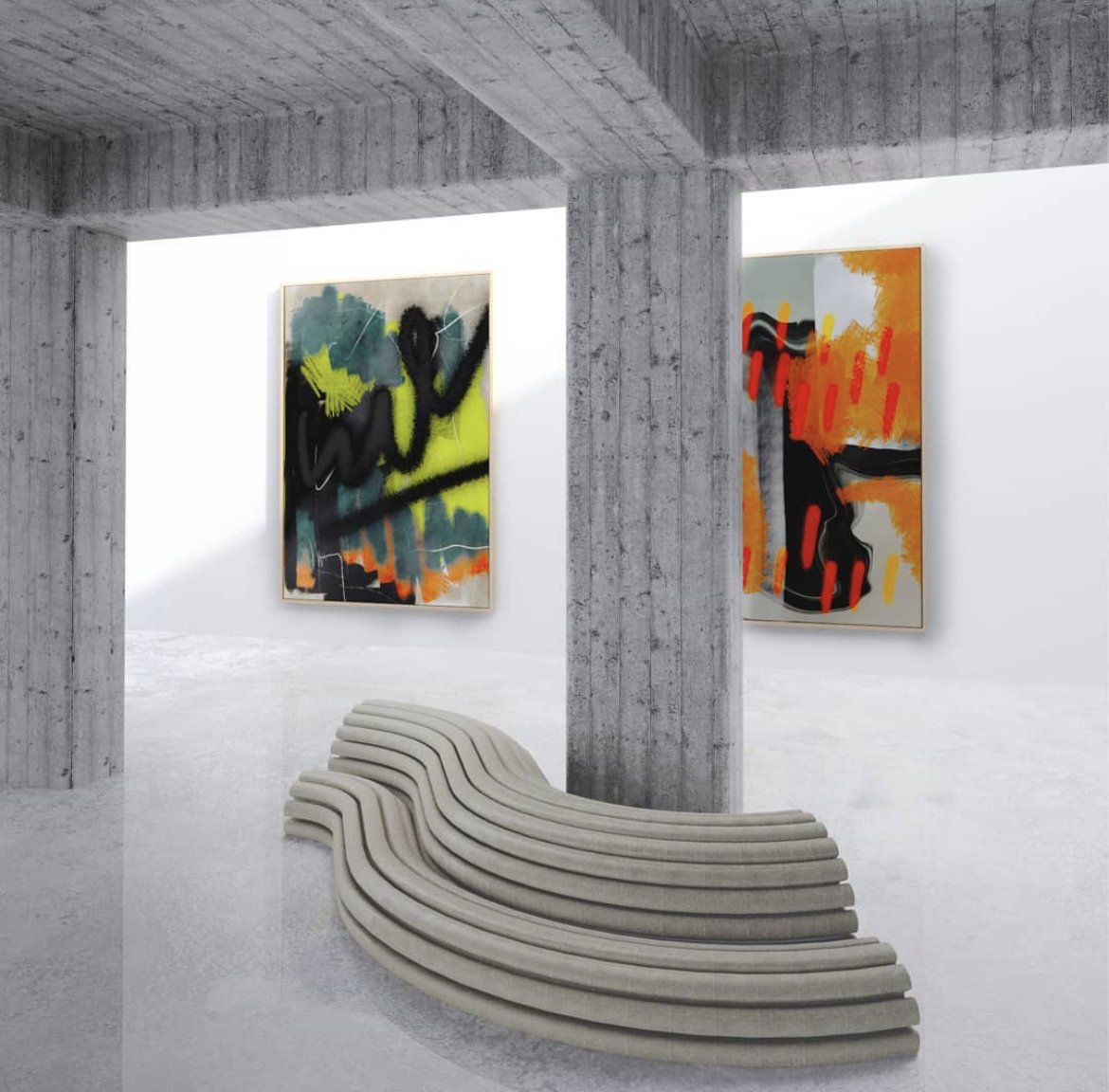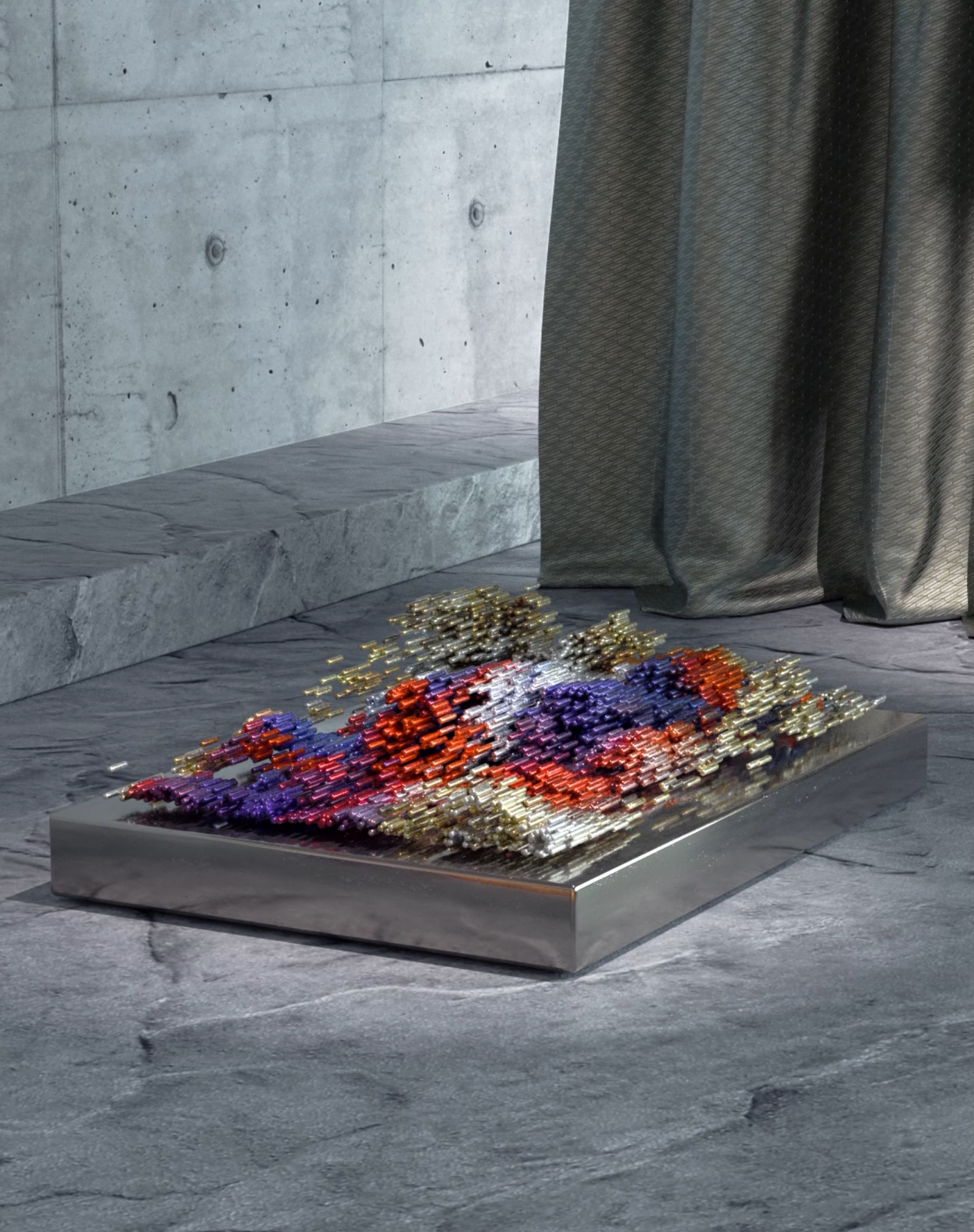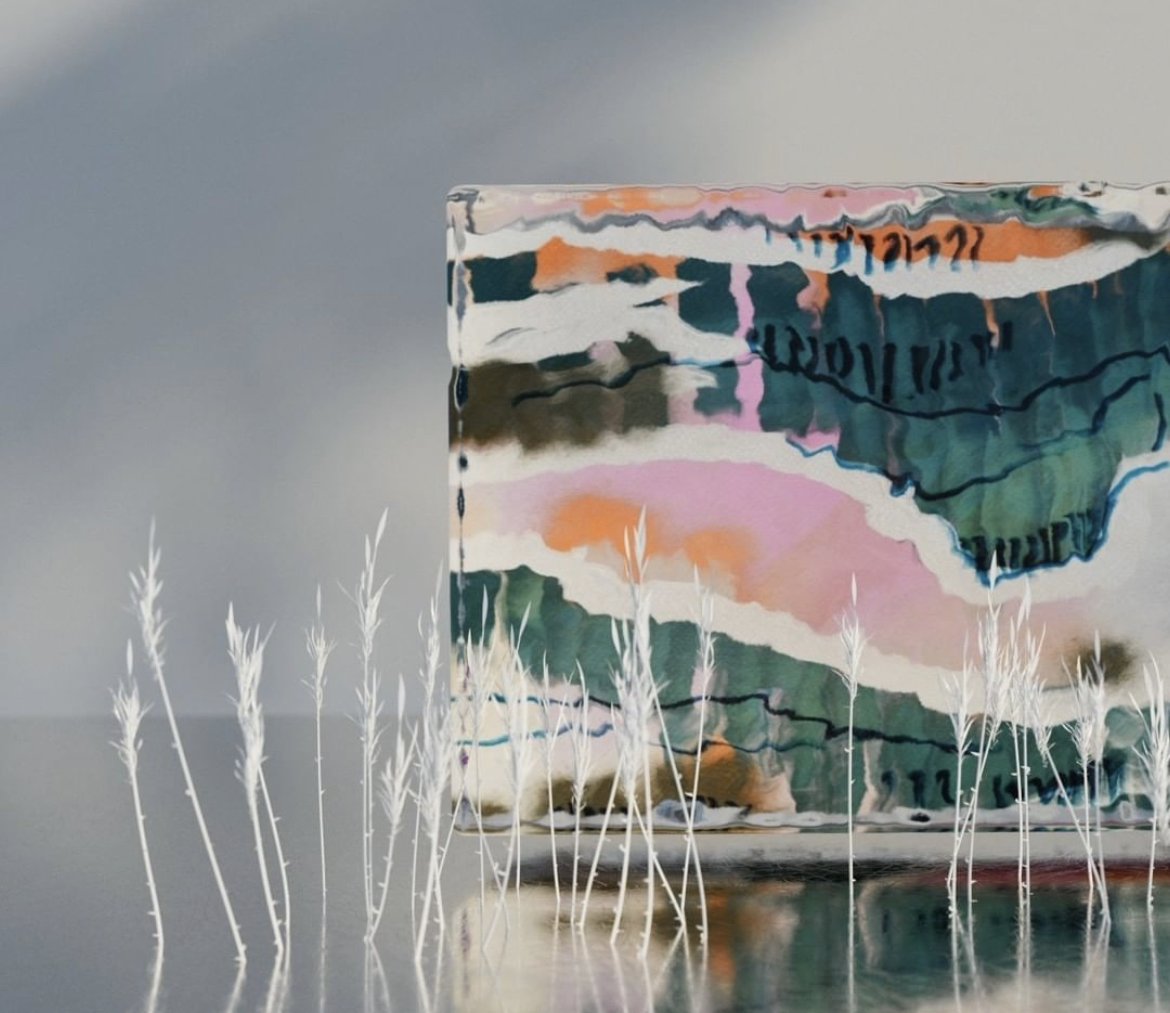Sabrina Jasmin | "I literally live to create interdisciplinary designs."
theFOUND Virtual Art Center this TALK with Sabrina Jasmin, a female 3D designer from Berlin, Germany, is the founder and designer of SAJAS 3D design studio.
Sabrina Jasmin's works show exquisite life aesthetics everywhere, gentle and tension. As one of the few female 3D artists in the industry, Sabrina Jasmin's works express the value and significance of her creation. “I literally live to create interdisciplinary designs.” Her inspiration mainly comes from critical thinking or strong desire to escape from the real world. Her idea is to create feeling. Sabrina Jasmin breaks through the physical space of architecture to the digital virtual space. For her, this is an unrestricted creative space where she can embrace creativity and share with the world.
As a female interdisciplinary artist, Sabrina Jasmin also said that there will be more female interdisciplinary artists and designers in the future. At the same time, more interdisciplinary global social issues deserve to be advocated and concerned by artists, such as climate change, equal rights or to enhance empathy and perception. “ But great opportunities also bring great responsibility, so this field should be explored in an interdisciplinary and ethical way.” I very much hope to eventually become part of a larger interdisciplinary team with the same vision to make the digital and virtual world better. "
Sabrina Jasmin / SAJAS STUDIO
“I literally live to create interdisciplinary
designs. ”
theFOUND & Sabrina Jasmin
Q1:
Your works show exquisite life aesthetics everywhere, gentle and tension. As one of the few female digital artists, when did you begin to contact the field of digital art and establish SAJAS studio?
Thanks for your wonderful view of my work. That really is the effect I always want to achieve.
I am Sabrina-Jasmin, my artist name is Sajas. I am 28 years old, born and raised in berlin. I share my life (and my home office) with my lovely husband who is also a 3D artist and our furry spitz.
I loved art since I was a kid, always drawing and painting. Then I decided to study architecture. There I get in touch with the world of 3D. I really enjoy it, to work conceptual and to plan spaces and rooms, but I wasn’t willing to limit myself to one field of design. So, after my graduation I decided to combine all my passions and study communication design. I have many friends who are part of the 3D scene in Germany and I dived into this world, where physics doesn’t limit the imagination of aesthetics anymore. Sajas studio allows me to embrace my creativity and to share my work with the world.
Q2:
You show the world in your eyes to the public, bright and colorful. It is an advanced and elegant interpretation of your emotion. Can you explain your understanding of color to us?
I love harmonics with subtile and well considered contrasts. Even as a child and teenage girl, I put a lot of thoughts into the colors I use and even when it comes to spaces, I love to think conceptually. I always ask myself: how should it feel? And then I work over and over my color palette until it feels right. Sometimes that can be a long way down the road.
Q3:
In most cases, where did your creative inspiration come from? Among the many series of works, which project has the most special significance for you?
My inspiration mostly comes from critical thinking or the strong desire to escape the real world. That may sound ambivalent, it probably is. But that's exactly how my work is created. Things in this world make me sad, then I try to point it out with my work. And as a kind of compensation, the next work is a relief.
This is exactly how my work “Clean” was created. What is significant about that video is that these scenarios illustrate controversies, in a surreal way. After that I had to make some playful and feelgood visuals with bright lights and flowers for emotional regeneration.
Q4:
You are involved in a wide range of art types, including 3D, digital art, virtual exhibition hall, virtual architectural space, digital sculpture, graphic design, photography, etc. How do you define your artistic creation concept?
I think my concept is to create feelings. And feelings aren’t always good or always bad and they also need various ways to express. People show their feelings with the clothes they wear, the music they listen to or the words they speak.
Only the suggestions of limiting myself to one way to express my creativity makes me feel claustrophobic.
Therefore my work is mixed media. And it always is a work in progress, all the time for the rest of my career. And that makes it so exciting.
Q5:
How do you view the development of the Metaverse, the diversity of art, the integration of multi-disciplinary art and science and technology, and the identity of 3D artists are also changing in this special "historical period". What do you think?
I think people are in the process of understanding that the digital space is not just a triviality in our lives. Slowly, people admit to themselves that they live more for the digital world than for the real one. This is a tragedy, but also an opportunity. Because we can reach people, we can emotionally enhance people and create awareness in this digital space. Therefore 3D artists also have a responsibility to send the right messages and highlight the right things through their work.
Q6:
With the acceleration of the current virtual process, what obstacles or new opportunities do you think there are in the environment of virtual digital art and commercial art?
I think a great opportunity is participation and immersion.Though multisensory interaction possibilities (VR, gamification, projection mapping, etc.) people can be motivated for important things. Things like climate change, equal rights or for the sharpening of empathy and perception. But great opportunities also bring great responsibility, so this field should be explored in an interdisciplinary and ethical way.
Q7:
At the same time, in the virtual digital art industry , the proportion of female artists is far less than that of men. I personally and we all believe that the creativity of female perspective is infinitely possible. Do you have any suggestions or ideas for more young or female digital artists in this field?
At the moment it is a very male dominated industry. And I think the reason for that is the way the last generations were raised by their parents. Society did not embraced girls to have “ nerdy” hobbys like playing video games or join a coding class in school. It really is important to give women the opportunity to participate in the process of shaping the digital world. I think equal opportunities begin in the child's room.
Q8:
In the future, what new attempts will you have, and what new areas do you hope to challenge and create greater value?
I very much hope to eventually be part of a larger interdisciplinary team that shares the same vision and makes the digital and analog world a better place.
